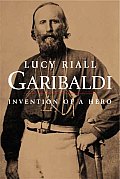Garibaldi: Invention of a Hero
Book by Lucy Riall.Until recently, the publication of yet another life of Garibaldi might have been greeted with a shrug and a yawn. What new could possibly be said about a figure whose every word and every deed has been memorialized or picked apart in children's textbooks, scholarly histories, and a plethora of biographies both hagiographic and critical? Fatigue with the lore of the Italian unification and skepticism about its founding fathers were plain already in 1926, when Piero Gobetti published his famous essay "Risorgimento Senza Eroi," or "The Risorgimento Without Heroes." There was already an awareness that the creation of the Italian state had been a deeply flawed and inadequate process, championed by a small cultural elite, carried out more by diplomatic maneuvering and the power of foreign troops than by a great popular uprising; and also that unification had left Italy almost as divided as before, a country where old and deep allegiances to family, town, region, and church continued to compete with the new nation for the loyalties of most Italians. From the 1960s on, when historians became more interested in "history from below," the fascination with the "great men" of the Risorgimento seemed more like quaint nineteenth-century hero worship than serious history.
But then the intellectual climate changed again. In recent decades, new scholarship on the nature and history of nationalism has opened up a new space for a reconsideration of Italian unification and its heroes. In 1983, there appeared two groundbreaking books on nationalism, Benedict Anderson's Imagined Communities and Ernest Gellner's Nations and Nationalism. Each in its own way argued that nationalism, rather than a hoary and innate form of identity (as all nationalisms insist they are), is in fact an exceedingly modern phenomenon that was made possible not least by the invention of printing, industrialization, and mass communication. 
Link
posted by johannes,
Wednesday, August 22, 2007
[The Archives]

.
.
.
.
.
|
.
.
.
|